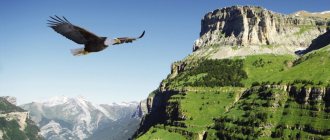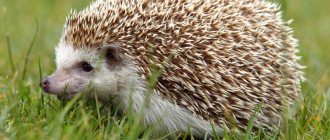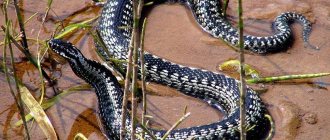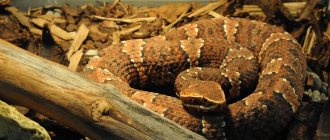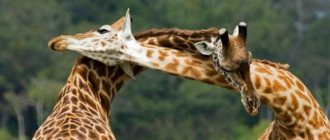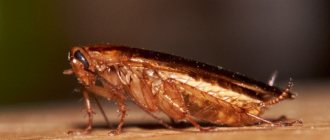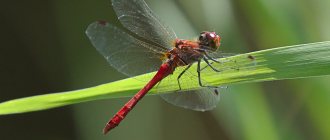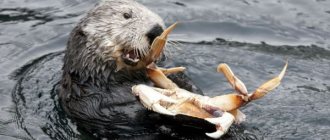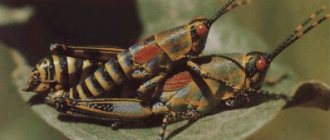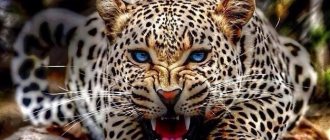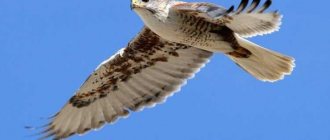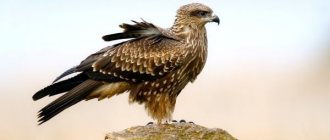Back in the days of Ancient Rome, there was a legend that the porcupine was capable of throwing its quills at enemies like arrows, and also that they were poisonous. In fact, neither one nor the other is true. The porcupine can quickly insert the quills and recoil, or lose them during sudden movements. And the pain and difficulty in healing wounds left by a porcupine is explained by the presence of dust, dirt and sand on the quills, which causes them to become infected.
Porcupine quills
Porcupine quills An
outstanding feature of porcupines is considered to be the longest quills among other mammals . The longest of them reach half a meter and have a thickness of 0.7 centimeters. The fur of porcupines varies throughout the body and consists of several types of hair:
- Elongated, dense and very sharp needles, which are hair modified during evolution.
- Long, easily bendable bristles.
- Flat shaped needles.
- Soft fur hairs.
- The same hairs, only stiffer.
Porcupine
Half-meter quills are located on the back of the animal. At the same time, they are not strongly attached to the animal’s body; they constantly fall out without causing injury to it. The animal may not even notice the process of needles falling out. In the space between them there are thick but short spines, growing from fifteen to thirty cm in length. Soft hairs are already hidden under them. Dense hair covers the head, lower body and limbs. In addition to the bristles on the tail of the animal, there are thick stakes.
Variety of species
It is easy to recognize a porcupine in a photo, and most often we see the most common and best known breed - the crested porcupine. Many species of these animals are found only in a certain area, such as the Philippine or Sumatran porcupine.
The difference in size of porcupines is quite significant: from 40 to 90 centimeters. The weight of the animal ranges from two to 27 kilograms.
But despite the difference in size and some species characteristics, the main difference between these animals is their uniquely long spines (up to 50 cm in the back area).
How does a porcupine pick up its quills?
Hollow spines in a porcupine's tail
Porcupine spines are hollow inside, some filled with a spongy, horny substance. When an animal is in danger, it begins to raise its spines. This is due to the strong back muscles. The needles rise and bend back. At such moments, the porcupine shakes itself, emitting a crackling sound that scares off predators. This kind of crackling sound is characteristic of all species of porcupines, except long-tailed ones. The animal's bristles are brown in color, the shade of which varies depending on the location. The needles that cover the sides, tail and back of the animal are striped black and white.
Body structure
The average length of the animal’s body varies depending on the species it belongs to. Small species grow no more than 38 centimeters in length, large ones - up to 90.
Porcupine - gait
The limbs of porcupines are short and somewhat clumsy. For this reason, animals are slow and waddle slightly. However, if the animal is in danger, it can run for a long time and quickly. The forelimbs have 3 or 4 toes. There are five on the hind ones, but the first finger is underdeveloped. All fingers have sharp black claws at the ends. There are no irregularities on the soles of the limbs.
Porcupine tail
Most porcupines have a medium-length tail.
It grows up to 15 cm. However, in the long-tailed species, as well as in the brush-tailed porcupines, the tails grow up to 25 cm. Interesting fact: porcupines tend to seek entertainment. One animalist described the behavior of one family of porcupines living in a cave - they constantly rolled down the same slide, like generations before them.
Porcupine
The animal's skull is slightly elongated. It is oval, the bones of the facial part are well developed. The muzzle is blunt, slightly rounded, completely covered with short hairs. Some species of porcupines are distinguished by a beautiful comb of bristles on their heads.
Fun fact: Porcupines don't like to move. Their basic needs in life are food and reproduction.
Porcupine teeth
The molars of animals are extremely strong and have a flat chewing surface. At the same time, the incisors are developed with an orange enamel color, clearly visible from the outside, as in all rodents. Teeth growth is observed throughout the life of animals. It is for this reason that their complete grinding is impossible. The porcupine has a total of 20 teeth in its oral cavity .
Small round eyes are set very far back, the ears are barely noticeable, slightly reminiscent of human ears in their shape.
Interesting: Giraffe
